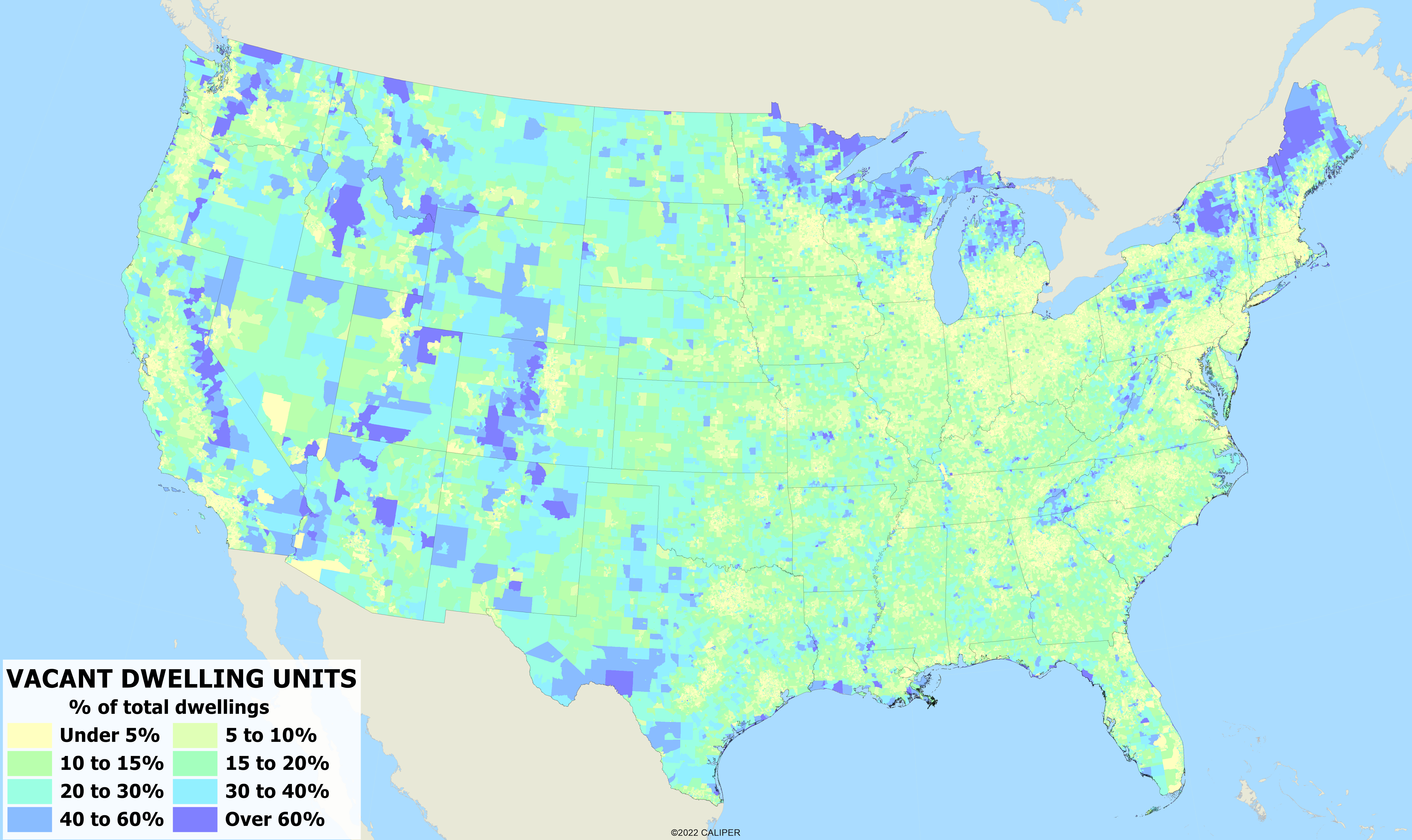New in the 2023B release, we are expanding our vacant dwellings data to include the reason for vacancy. This helps us distinguish between temporarily and permanently vacant dwellings and it gives us a better handle on tourist activity via seasonal/occasional use vacancies. When looking at the reason for vacancies, interesting patterns can emerge.
To get a baseline for vacant dwellings in the United States, we mapped the percentage of total vacant dwellings. While most areas boast a percentage under 15%, there are of course areas that jump out at you in the darker blue which show areas of higher vacancies.

There are several categories for vacant housing, which includes for sale, sold but not yet occupied, for rent, rented but not yet occupied, for occasional or seasonal use, for migrant workers, and other vacancy reasons. The other vacancies include ‘abandoned’, which is what most people associate with vacant housing. We mapped the primary reason of vacant housing in the United States, shown on the map below, where you can see the most common reason for vacant housing.

We called the first four categories “In transition”, which usually occurs in the cities and suburbs. When you see an affluent area with vacant housing, this is usually the case as these homes are in transition. These areas are shown in the map above in blue. Occasional or seasonal use vacant homes usually appear anywhere along the coastlines, mountain resort areas, and northern resort areas, often thought of as cottage country (Minnesota, Michigan, northern NY, Vermont, New Hampshire, Maine). In some places, 75% or more of the vacant dwellings are for seasonal or occasional use. These areas are the ones shown in green. The small areas of red show the migrant worker use, mainly in fields of agriculture and mining, but it is rarely the dominant reason for housing vacancies. The rest are truly abandoned, usually in distressed areas of most major cities and rural America.
When looking at specific cities and truly abandoned housing, Detroit has long been in the news for this problem. However, much of Michigan has vacant housing, though it is mostly seasonal or recreational along the northern coast. The map below shows the state of Michigan and the primary reason for vacancy.



Recent Comments